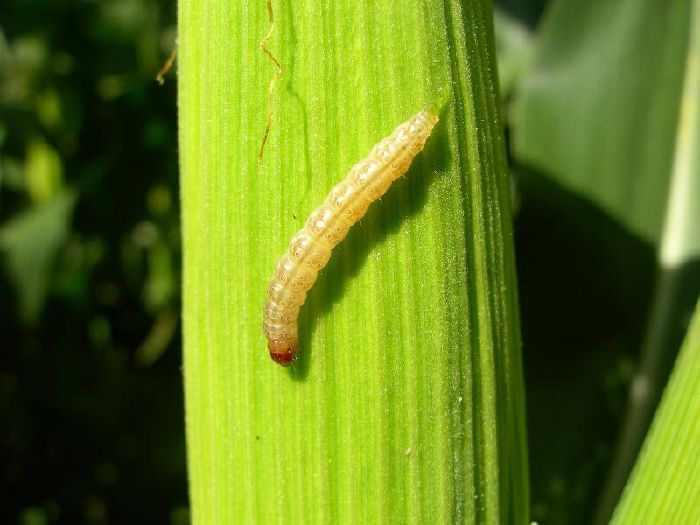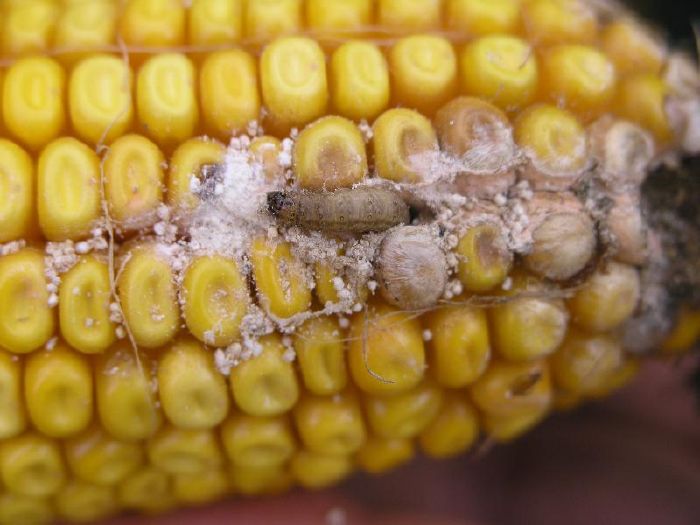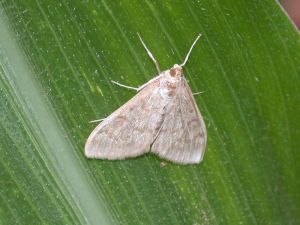European corn borer
Adult : dark to light ochre moth.
Larva : caterpillar 2 to 20 mm long. Light grey with a dark grey line running the length of the back.
1 to 2 generations/year, depending on the region.

Symptoms on maize
Symmetrical "shotgun" perforations on leaves.
Perforations on stalks and ears.
Caterpillars on and in plants.
Presence of sawdust.

Period of presence
Période de présence :
| J | F | M | A | M | J | J | A | S | O | N | D |
Observation method
Field observation : 3 observation plots on at least 10 plants. Observe the leaf axils and count the number of individuals or ooplacae (egg-laying).
The egg-laying peak is reached shortly after the flight peak. To do this, place pheromone traps in the plot to detect peak adult flight.
Technical and agronomic management advice
Shred maize stalks after harvesting. Control using trichogramma on eggs.
Pressure level
Low : less than 3% of plants with ooplaci or less than 0.2 individuals/plant counted in year n-1 if the plot had maize before.
Medium : 3 to 9% of plants with ooplaci or 0.3 to 0.7 individuals/plant counted in year n-1 if previous maize on the plot
High : from 10% of plants with ooplaci or 0.8 individuals/plant counted in year n-1 if there is a previous maize crop on the plot.
Pressure levels are given for information only and do not reflect the exact severity of infestation at any given time or subsequent damage. Other factors specific to the crop and the dynamics of the development of symptoms or infestations come into play.
Sources
This article was written in partnership with <a href="https://www.agrifind.fr/alertes/mais/mais-pyrale">Agrifind</a> and <a href="https://www.terresinovia.fr/">Terres Inovia</a>.


